Have you ever clicked on an Ad that really caught your eye, only to land on a page that felt so out of sync? Perhaps you wanted a solution to keep your small team organized and instead were reading a headline that seemed tailored for a Fortune 500 CEO. Those disconnects happen way more than we think, and they represent one of the biggest missed opportunities in digital marketing.
Landing pages have long been regarded as static brochures. You create two or three variants and you wish that they could talk to your visitors. A/B testing was a great way to get things rolling, as this allows the marketers to take a guess between different alternatives, nevertheless, it is based on the assumption that a given version can suit the majority of people. Which it doesn’t. But what if we could go further? What if, instead of guessing who the viewer is, we could create a landing page specifically for the viewer who is actually viewing it? And that’s where things get exciting. With AI, every visit can potentially mean a unique experience. In fact, the headline, images, and even call to action could change depending on who is looking at it, where they are from, or what they care about.
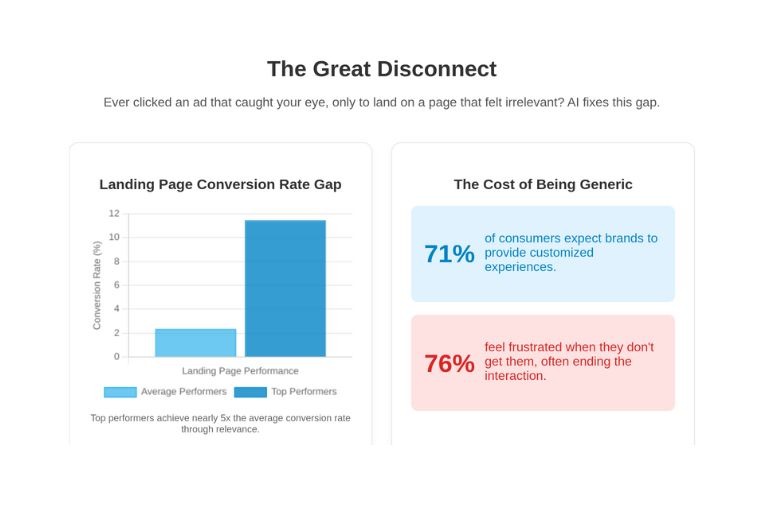
And it does work. The average performance of landing pages is 2.35 percent, but the highest performers achieve a conversion rate of more than 11.45% Why? Simply because they feel relevant. Nearly 71 percent of consumers expect brands to provide hyper‑personalized experiences. When they don’t get them, 76 percent say they feel frustrated, and that frustration often ends the interaction before it even begins.
In this blog, we are going to explore how all this is being made possible through AI. We will discuss why static pages are failing, how artificial intelligence-based personalization really operates, and what you can do to begin constructing the more intelligent and effective landing pages one by one.
1. Why Static Pages Fail:
Now that we’ve begun to investigate how AI can bring some personal touch to landing pages, it’s worth asking a simple question. What exactly is so wrong with the static pages most of us still use today?
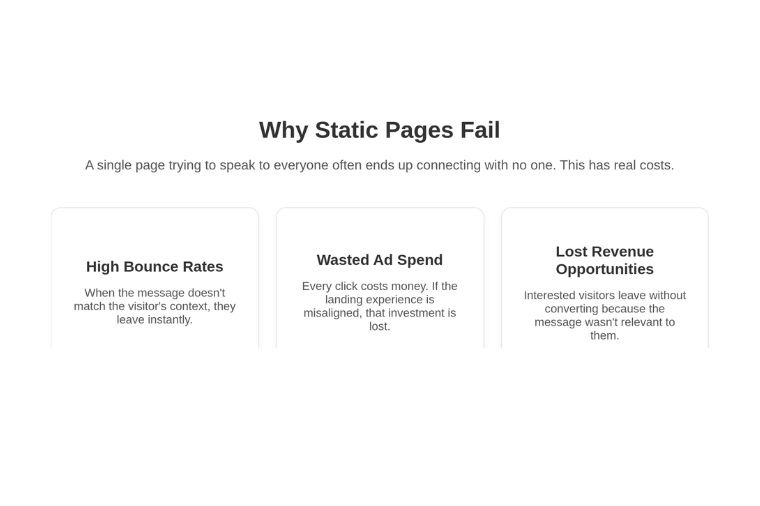
- High Bounce Rates:
The truth is that a single landing page trying to speak to everyone often ends up talking to no one. It tells one story, in one voice, no matter who is reading it. And surprisingly, this can be quite costly in the digital marketing space. The visitor clicks through an Ad to see something totally different; they just walk away. Imagine: a visitor comes from a small-business accounting Ad and lands on a page meant for enterprise users. Or the opposite. That mismatch causes bounce rates to spike and interest to fade.
- Wasted Ad Spend:
User experience is also important because each click incurs a cost. . It costs money to bring traffic, and when traffic arrives on a page that seems irrelevant, that value goes away. Even the best-targeted Ads fail if the landing experience feels misaligned.
- Lost Revenue Opportunities:
More than that, opportunities quietly slip away. Highly interested visitors come and go without conversion not because something is wrong with the product, but simply because the message of the product was not relevant to them. In fact, sending traffic to a dedicated landing page instead of a homepage can increase conversions by over 55 percent. But if that landing page still feels generic, that potential is left untapped.
Imagine a SAAS company that provides project management software. Phrasing like “The Best Project Management Tool” at the top of the page can create a scenario where marketing agencies and construction companies both feel they are not addressed if this becomes the content of the page to be accessed. The construction firm can’t find anything about managing subcontractors or tracking blueprints, and campaigns or client approvals aren’t mentioned to the agency. The end product could work perfectly for either one, but they’ve both had a bad experience and left. And this is the gap AI is now beginning to close.
2. The Anatomy of an AI-Powered Landing Page
Static landing pages often fail by telling one story alone to whichever audience is listening. Now, we are going to move a step further in discussing what an AI-powered landing page actually looks like.
- Dynamic Text Replacement:
The AI-generated landing page is designed to modify itself according to who visits it. “It starts with the words.” Instead of just one headline for everybody. AI looks for signals like the Ad someone clicked on, their location, their industry, or their company size, for instance. The Ad is thus tailored to reflect these details. So, someone coming in from a tech company could see a headline that addresses software teams. Whereas a visitor coming from healthcare could see language that’s tailored to their world.
- Intelligent Image & Video Swapping:
The images and videos change too. A hospital network might be seen as a clinical setting. A startup might see a modern workspace. Such changes keep the feel familiar, encouraging one’s inclination to stay.
- Behavior-Driven CTAs:
Even the call to action adjusted itself. The first-time visitor may see a short demo option, while a visitor returning is nudged to book a consultation or start a free trial. This approach captures a full understanding of where someone is in their journey and allows for a more tailored response.
- Social Proof Personalization:
Personalized social proof gives it an added feel. AI can pull up testimonials or logos from other businesses, which look as if they belong to your visitor. For example, a mid-sized SaaS company might see case studies from similar brands. The more relevant the context is, the faster it builds trust.
Consider a visitor from a brand like Notion heading to a software platform’s site. Rather than a generalized message like “Convert your website into your number one revenue channel,” the visitor encounters the message, “See how Notion can convert more users with personalized web experiences.” Logos from additional SaaS companies surround it. Everything happens automatically, powered by AI. It is not smart; it is a subtle shift that redefines the value of landing pages in the eyes of the visitors. And all of this is becoming less of a nice-to-have and more of an expectation. In fact, 88% of marketers stated their customers expect personalized experiences. AI mostly helps deliver such experiences consistently across high-traffic pages.
3. AI-Driven Optimization:
AI offers a personalized experience for the surface of a landing page. Now it is time to go a level deeper. Because the actual magic is no longer just found in what the visitor sees. It is how the page keeps learning and improving behind the scenes.
- The End of Manual A/B Testing:
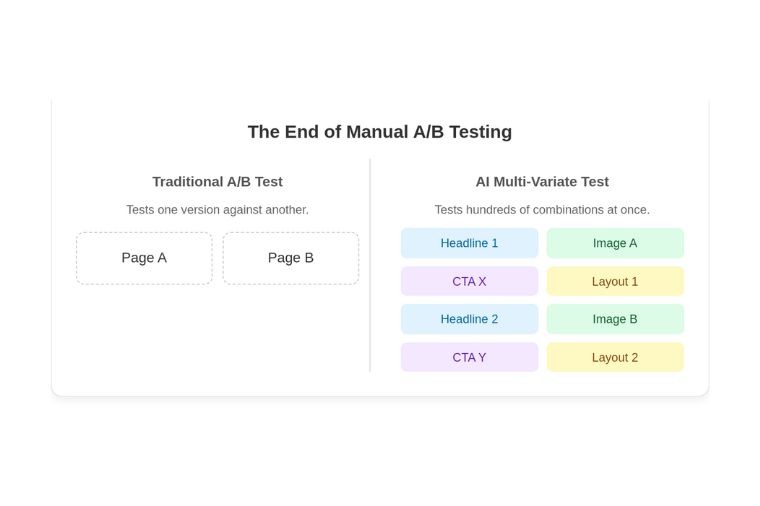
Marketers have long used A/B testing to compare one version of a page to another. But this approach moves slowly and only explores a few options at a time. AI changes the game by testing hundreds of combinations all at once. Headlines, layouts, images, calls to action, and even form fields can be adjusted in real time based on how visitors respond.
- Predictive Personalization:
Beyond mere testing, AI learns. It starts learning to recognize patterns and to predict which version of the page would work best for which visitor. This is predictive personalization, which helps in customizing the experience even before somebody interacts with the page. The more time the system gets for observing what works and what doesn’t, the better it gets at knowing what to show and when.
- AI-Powered Chatbots:
AI also adds a new layer of intelligence to chatbots, and learning how to design effective chatbot conversations can be a game-changer. It helps guide visitors through the page by asking pertinent questions and providing pertinent answers. The chatbots intervene on behalf of a user waiting to fill a form or getting stuck anywhere and continue the conversation. This seemingly simple change could increase engagement and result in better conversions.
And truly, the impact is real. AI testing platforms have brought about increments in the conversion rate of about 30 to 50 percent within six months. That’s just one way how AI automation boosts ROI. The pages with chat bots have found that they have raised lead capture rates up to 67 percent. Such figures highlight the potential power of a page when it learns to interactively receive each visitor and gets smarter with time.
4. Fueling Your AI Personalization Strategy
Artificial intelligence personalizes and optimizes landing pages very differently from manual efforts. However, none of this happens without that one thing: data. Although AI itself appears to be bright and intelligent, its potential really depends on the quality and extent of information with which it has to work.
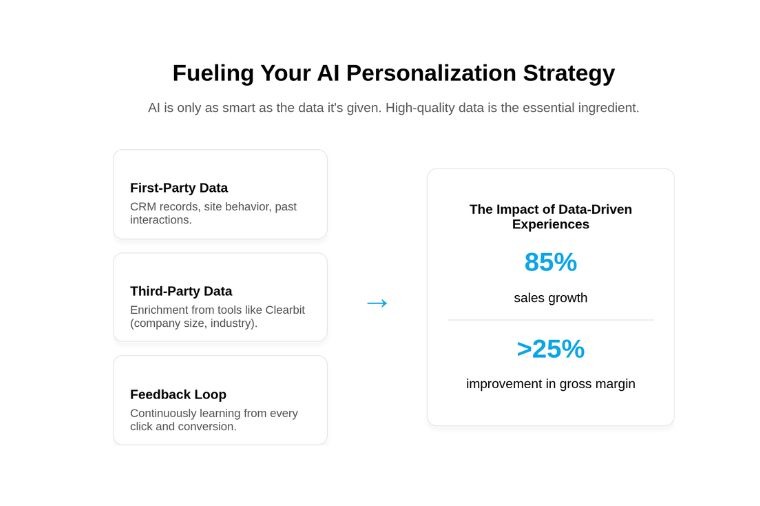
- First-Party Data:
Starting with first-party data. It includes everything that businesses know about their users such as records of customer interactions via CRM, emails, and website behavior. Put together, this data helps the AI comprehend who a visitor is, what he or she has looked at before, and what is probably going to be on their mind now.
- Third-Party Data Enrichment:
Then we have third-party data, which adds an extra layer of context. Tools like Clearbit or 6sense can gather information on a handful of parameters like the company size or industry of a given visitor. It helps signal the AI to make an experience more relevant, even when the visitor is anonymous.
- The Critical Feedback Loop:
The true strength lies in the potential to learn continuously from every visit and click that adds to a growing pool of knowledge: If someone converts, it’s a successful data point; if they don’t, that’s still a considered data point. The AI will then refine its ability to predict what works for the next set of visitors.
And results speak for themselves. Companies that apply behavioral data in formulating user experiences have achieved 85 percent sales growth and more than 25 percent improvement in gross margins when compared to their counterparts. The fast-growing customer data platform market will also reach 20.5 billion dollars in revenue by 2027. This is clear evidence of how much unified data has gained worth as a currency for providing meaningful personalization.
5. Roadmap to AI-Powered Landing Pages
The AI experience of personalizing landing pages and learning from behavior relies heavily on good data for the task to be considered successful. Now we come to the key area: how do you initiate?
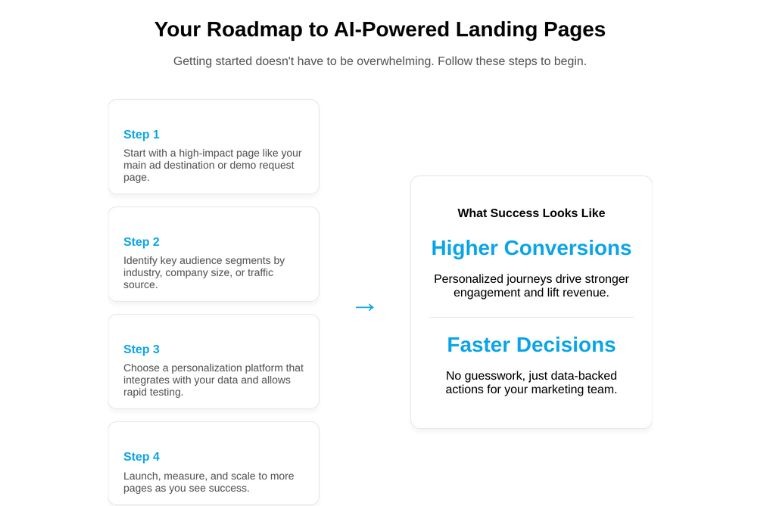
Step 1: Start with a High-Impact Page:
The good news is that you do not have to personalize your whole site immediately. A good place to start is with a single landing page with a concrete goal such as your primary advertisement destination or demo request page.
Step 2: Identify Your Key Audience Segments:
The second step is the characterization of your visitors. Divide them into distinct audience groups based on industry, company size, or traffic source. This step helps ensure the experience you create actually speaks to the right people.
Step 3: Choose the Right Tool:
When you have identified your segments, select a web personalization tool that aligns with your needs. There are many platforms that can assist you in creating various versions of your page and associate with your current data. Look for one that is easy to use and offers the chance to test results rapidly.
Step 4: Launch, Learn, and Scale:
Start small with your initial personalized experiences. If necessary, you can just test with two versions of the same page, whichever will perform better. Measure, analyze, and learn from the results, making adjustments along the way and building confidence. As soon as you see a lift, broaden your strategy toward other pages that share traffic and intent.
A B2B technology company did just this. They began a demo request page and created two versions of it, one targeted toward enterprise visitors emphasizing security and scale, and the other toward startups focusing on speed and affordability. In the first month, demo requests increased by 25 percent for enterprise traffic and 40 percent for startups. The early wins enabled them to secure a budget request to roll out personalization on more pages. Marketers who take this focused approach often see a 15 percent increase in conversion simply by segmenting by channel. And from there, it becomes easier to build toward deeper personalization powered by AI.
Conclusion:
From static landing pages to AI-driven personalization, this evolution goes beyond how modern businesses engage with users. It no longer keeps a one-size-fits-all experience; instead, it uses smart systems to tailor the visitor experience in real-time appropriate to each visitor’s intent and context with content that matches what visitors are really looking for. It is a way to improve relevant experiences, reduce frictions, and thus create better conversion outcomes.
In many ways today, AI is a necessity rather than a possibility for the future. With a digital landscape increasingly dominated by users expecting personalization, the brands that provide it will have a clear edge. What will differentiate the successful brands will be their ability to make every click feel like the start of a conversation.

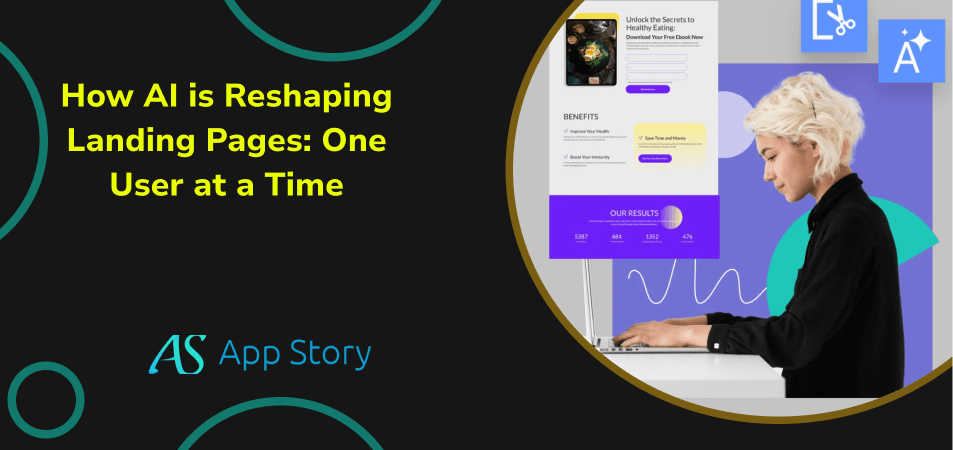
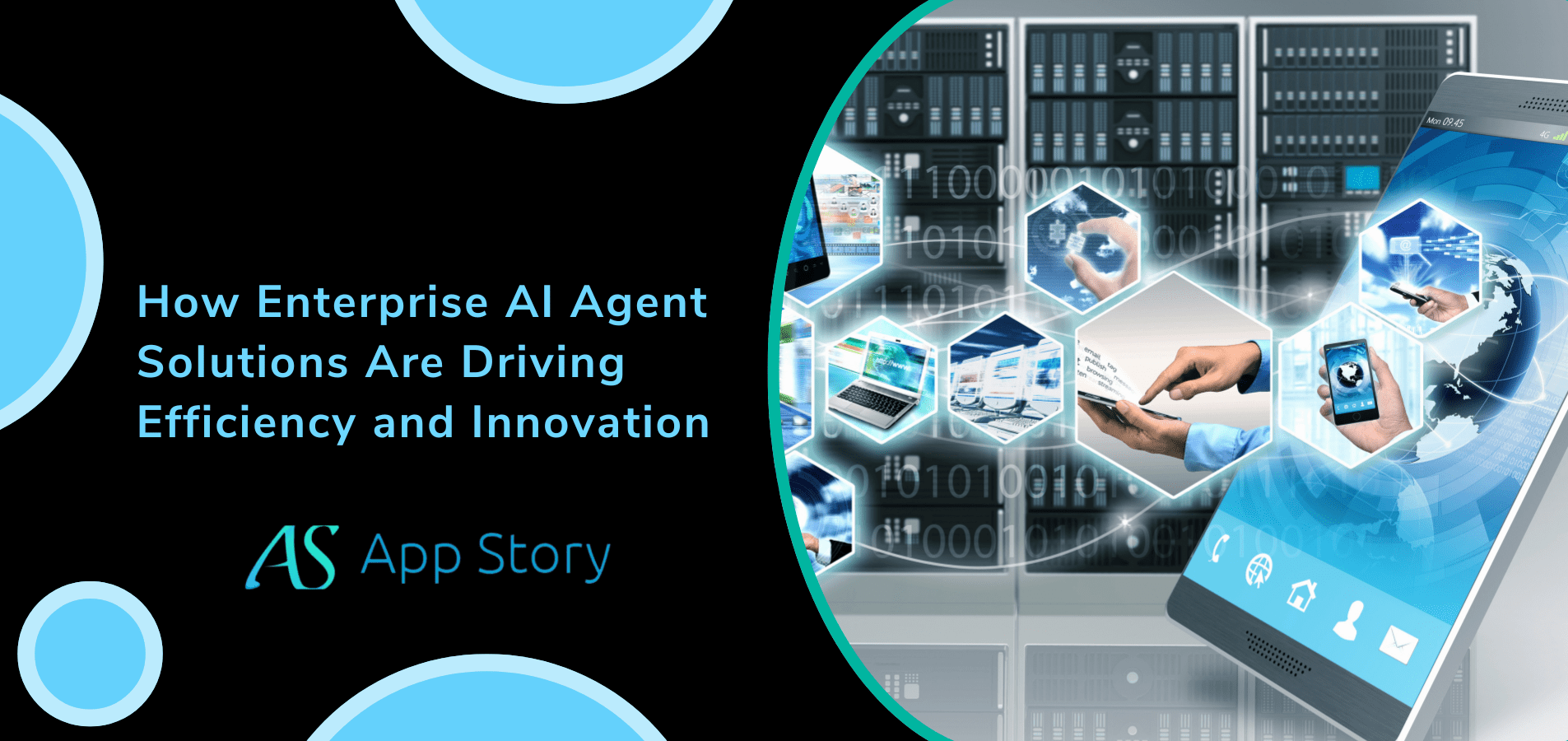
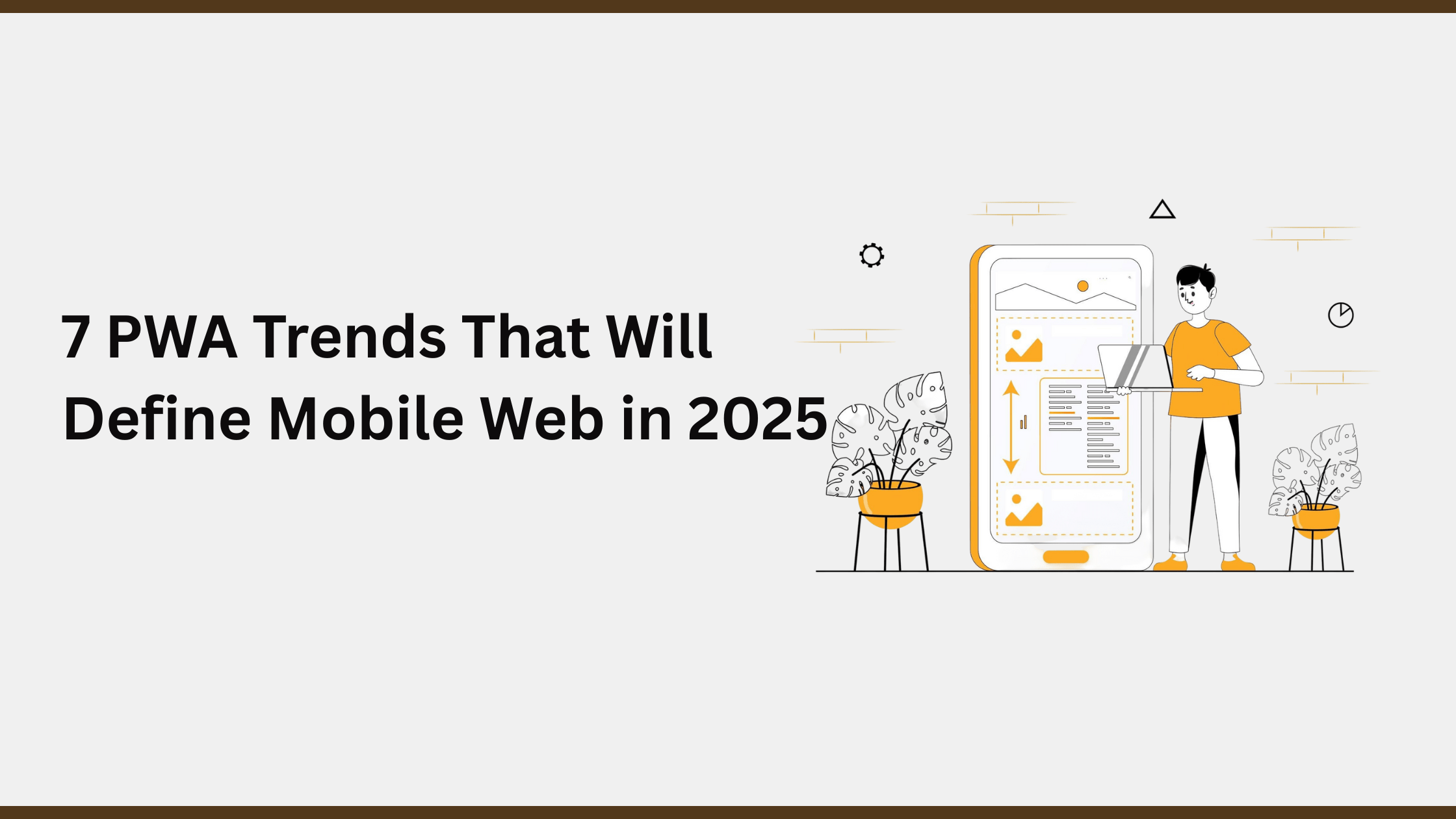
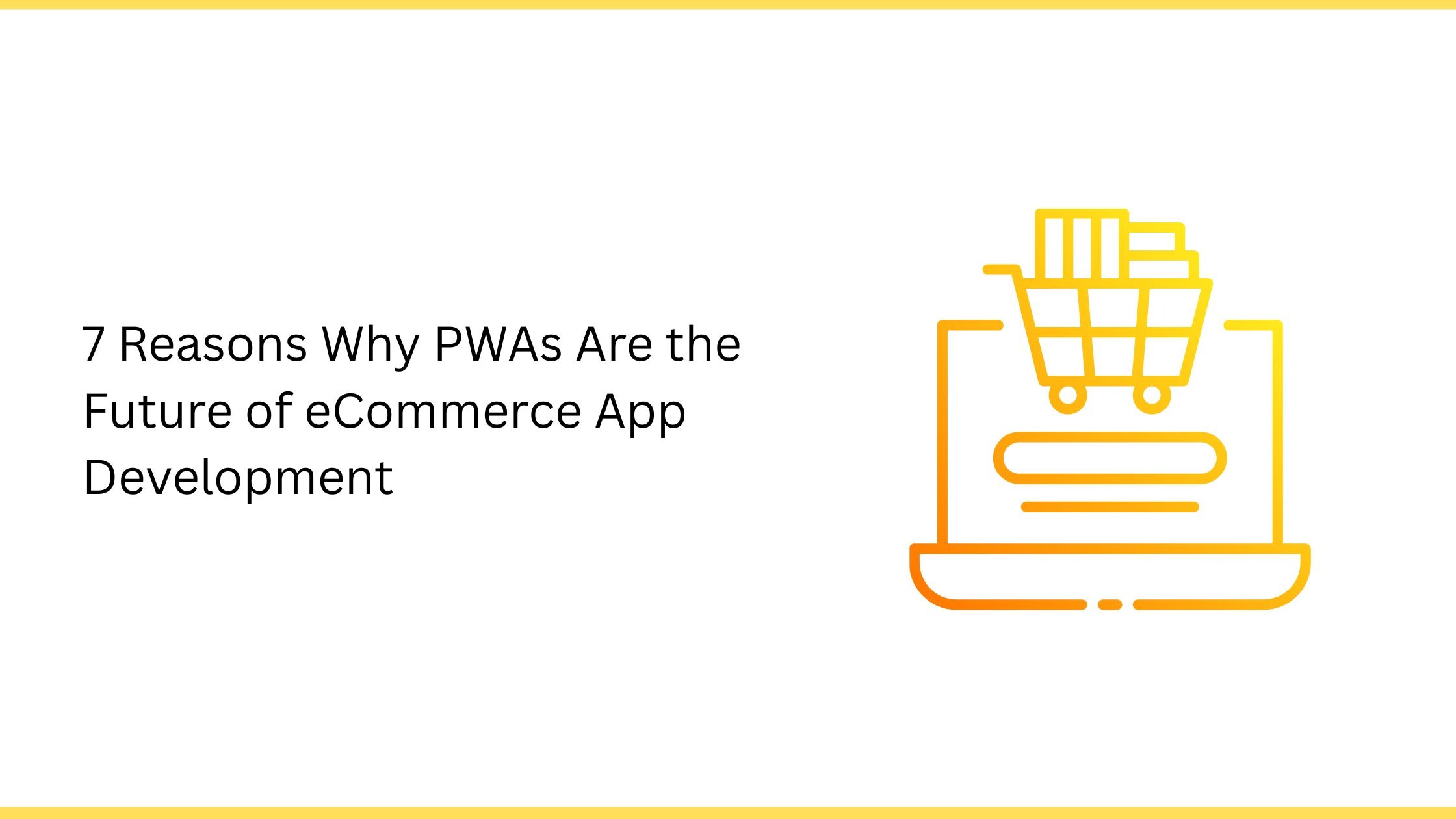
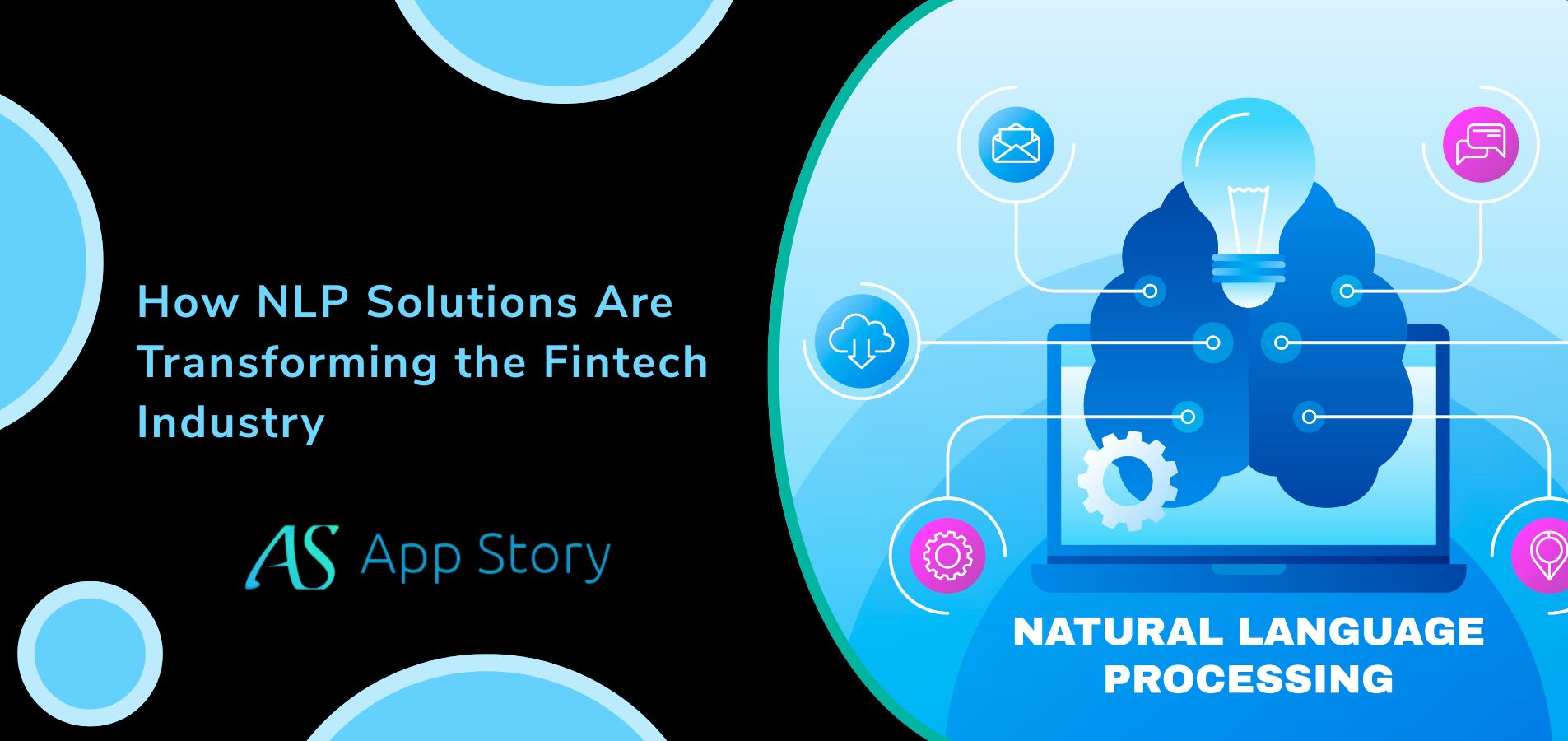
 United States
United States United Kingdom
United Kingdom India
India Canada
Canada Singapore
Singapore















![10 Benefits of the Internet of Things You Should Know [2025]](https://www.appstory.org/wp-content/uploads/2025/03/ATS-10-Benefits-of-the-Internet-of-Things-You-Should-Know-2025@2x-80x60.png)




















